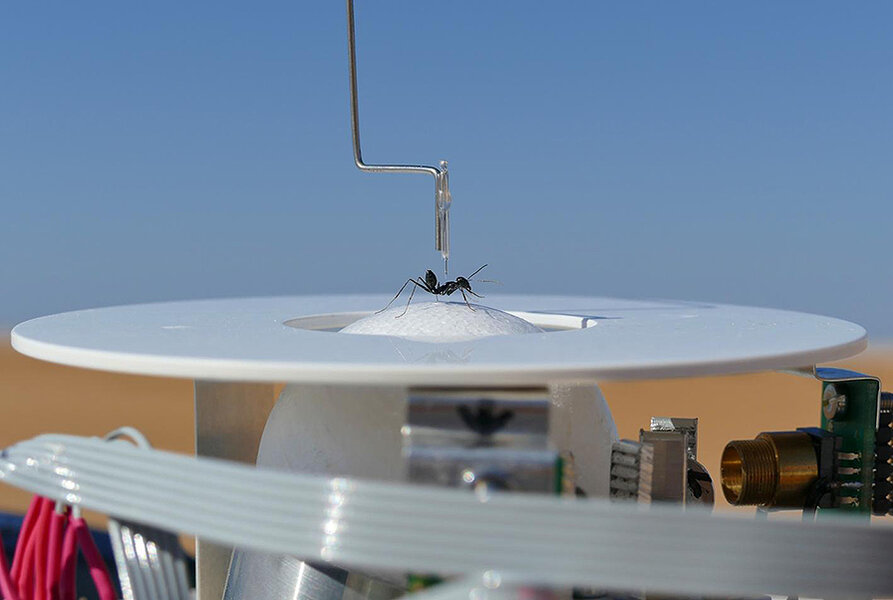What is this, a treadmill for ants? Study captures info on how ants navigate the desert
Loading...
The humble treadmill is a common enough sight at your local gym. But while most people might think of the device as a simple exercise machine, with the right modifications, the concept of a treadmill can be applied in all sorts of scientific capacities.
And now, scientists have created a new, improved kind of treadmill – for measuring the movement patterns of ants.
Of course, this ant treadmill is a little different from the ones a human would use. Researchers created the specialized piece of equipment by using a very light, hollowed-out styrofoam ball, supported by a stream of air. The ants themselves could dangle onto the ball using a string of dental floss. The ultra-light spherical treadmill would move as the ants moved, tracking and recording the path of the insects using optical mouse sensors.
"This gives us almost unlimited possibilities to test the mechanisms and neural basis of our model animal's spatial orientation and navigation – in the laboratory," Matthias Wittlinger, the leader of the research team, said in a press release. "We can place the ants in a virtual world and incorporate certain changes into it to see how they react."
The researchers used two species of Cataglyphis desert ants, which are known for their impressive ability to find their way home from large distances using the shortest route possible. As The Christian Science Monitor's Eva Botkin-Kowacki recently reported:
The classic image of ants is of them marching, two-by-two or otherwise, along pheromone trails as they go back and forth from a food source to their nest. But, for these desert ants, pheromones are not a factor.
That's because of the insects' foraging strategy, [Antoine Wystrach of the French National Center for Scientific Research] explains. In the hot, dry desert, ants forage for insects that have roasted in the sun, he says. As such, the food isn't all in a pile for a bunch of worker ants to retrieve. Because the food is scattered across the sand and an individual can typically carry or drag it back in one trip, they don't need pheromone trails to signal to the other workers where to go.
And, Wystrach adds, even the ants that use pheromone trails have also been found to rely on visual memories when they lose the pheromone trail or if it gets disrupted.
Cataglyphis ants navigate using the sun for orientation, and even take into account their movement over time by using their sophisticated internal clocks and counting their own footsteps.
But when these ants were put on the treadmill, of course, their normal navigation methods failed them. After initially taking a direct route towards home, the ants, upon not finding the nest where it was supposed to be, would switch to a different movement pattern. The insects would begin moving more slowly and would loop around, a movement pattern which Dr. Wittlinger referred to as "search mode."
The study, published in the Journal of Experimental Biology, records the details of the newly-discovered "search mode" for the first time, using using data from the new treadmill. While other treadmills for small, lightweight creatures have been made before, accurately tracking the small movements of ants has proved to be a challenge until now.
"Old designs had the animal rigidly fixed," Wittlinger told LiveScience, but now the new configuration allows the ants to move more freely.
"They virtually travel for many meters on the treadmill, as if they were running in the open field," he added.
The researchers hope that the improved treadmill design, which can be used in the controlled environment of a laboratory or outdoors, will allow other scientists to more precisely test other variables in order to learn more about the movement patterns of these remarkable insects in the future.








